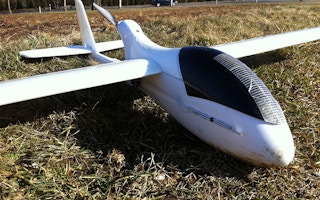Habitat and biodiversity loss, poaching, and climate change are some of the most serious issues impacting protected ecosystems today — and they require more than just field surveys to be effectively countered, according to a study published in the journal Global Ecology and Conservation last month.
In the study, an international team of researchers makes the case that integrating multiple technologies could greatly increase our ability to study ecological patterns and processes across large landscapes and long timeframes, allowing for threats to protected areas to be better identified and mitigated.
Traditional field inventories and other sampling strategies will always be a crucial tool for ecologists seeking to understand local-scale processes and the functioning of ecosystems, the researchers note. But field surveys are costly, especially when maintained over many years, and they are difficult to do in the more remote regions of the world.
“
Most technologies are low-cost or open-source, and when deployed can reach economies of scale that reduce per-area costs dramatically.
Researchers for modern conservation tools
New technologies in ecologists’ toolboxes can help overcome these obstacles, especially when used in combination, the researchers said. Satellite and airborne remote sensing, drones, camera traps, and data fusion and processing tools like the Spatial Monitoring and Reporting Tool (SMART) are among the technologies they argue could be linked to increase the “dimensionality” of data collection efforts by ecological researchers and conservationists.
“Most technologies are low-cost or open-source, and when deployed can reach economies of scale that reduce per-area costs dramatically,” the researchers write in the study. “The large-scale, long-term data collection efforts presented here can generate new spatio-temporal understanding of threats faced by natural ecosystems and endangered species, leading to more effective conservation strategies.”
The study looks at ways these technologies open up new possibilities for tracking wildlife, combating illegal activities such as poaching and illegal logging, and preventing human–wildlife conflict.
For instance, the primary form of field-based monitoring in protected areas around the world is patrols by rangers or park staff. These patrols have a variety of mandates, from research and monitoring to community engagement and law enforcement, and in each of these roles, the patrol teams must collect data. This is usually done with some combination of notebooks, spreadsheets, mobile devices, GPS, and digital cameras. All of this data flows from the field to the park managers who plan the patrols and other conservation tactics.
SMART is an open-source software platform that was developed specifically to improve the effectiveness of field patrols and park management. It had been implemented at 213 sites in 40 countries as of August 2015, and a number of national governments have even adopted the software as a standard for law enforcement monitoring. Patrol teams collect data in the field using a smartphone or tablet and then upload that data through SMART, allowing park staff to create spatial queries and summaries about patrol movements, human activities, and wildlife.
Remote sensing tools can supplement SMART data, however, particularly where forest loss or conversion is a primary threat, the researchers found. “When areas of recent change are identified, the georeferenced image can be sent to law enforcement teams to enable field inspection and follow up actions,” they write in the study. “These approaches are useful for detecting deforestation on a range of scales from small (10,000 ha) to very large (> 10,000 ha), and for certain kinds of degradation.”
If the impacted areas are too remote to make patrols feasible, a fixed-wing, unmanned aircraft system (also known as a UAS, but more popularly known as a drone) can be sent to capture high-resolution aerial photographs, thus helping authorities track illegal loggers in national parks and even gather evidence of their crimes.
That’s not to say that these technologies don’t have their limitations, or that they’re right for every scenario, however. All of these technologies come with trade-offs and challenges, as the authors of the study point out.
Drones are limited by the payloads they can carry and the distances they can fly without needing a recharge, for instance, meaning that lack of access to reliable power sources in remote areas reduces their utility. And many high-resolution satellite sensors are inaccessible or very expensive to access, while airborne remote sensing of any type “is not an endeavor to be easily and quickly undertaken, and will likely require developing partnerships with existing operators,” per the study.
The performance of these technologies is improving steadily as the underlying technologies continue to advance, which will solve many of these problems, the researchers argue.
Still, it is “critical” for scientists and conservationists to familiarise themselves with all potential drawbacks of any new technology they consider deploying. In some case, it may prove to be more cost-effective simply to invest in additional personnel training.
None of which should deter conservation officials from looking into these technologies and using them to enhance their efforts, the authors of the study concluded.
“We encourage researchers to continue fully embracing and integrating the technologies discussed here as a compliment to traditional methods when designing their fieldwork,” the researchers wrote. “Deployment and refinement of these technologies will continue revolutionising ecological and behavioural sciences, as well as conservation management of natural systems and endangered species.”
This story was published with permission from Mongabay.com










